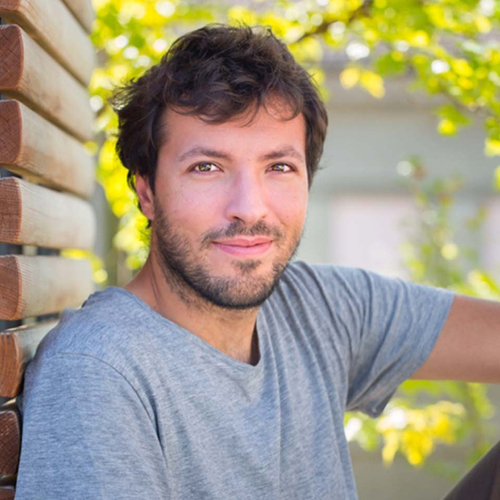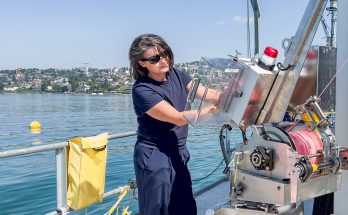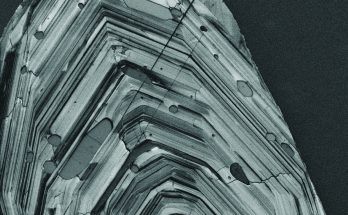Cette publication est également disponible en :
![]() Français
Français
Biodiversity Change is the label of a new research group at the University of Lausanne that is attempting to answer this question.
Global environmental change, in particular rising temperatures, is causing alpine glaciers to retreat and disappear. The consequences of glacier retreat on ecosystems are still poorly known and difficult to predict.
With his Ambizione project IceNet – Forecasting the impact of glacier retreat on network dynamics and ecosystem functions, Gianalberto Losapio aims to provide an empirical contribution to the understanding of these phenomena.
What are your objectives with IceNet?
Gianalberto Losapio : Since the end of the Little Ice Age (1500-1850), alpine glaciers are retreating and shrinking, sometimes to the point of getting extinct. The disappearance of glaciers is followed by a total upheaval, with the colonization of pioneer plants, insects, and microorganisms. How is the network of interactions between these organisms intertwined? And what role do ecological networks play in the response of species to environmental change? This remains to be discovered.
The IceNet project will unveil ecological networks in front of disappearing glaciers, which are formed among colonising microorganisms, plants, predatory insects, herbivores, and pollinators. I want to shed light on a biodiversity that is still little known – and that we are in danger of losing forever. But also to understand how an ecosystem evolves “from scratch”.
How to approach an ecosystem scientifically?
GL : First, we will reconstruct the ecological interactions between the various communities. The next phase will focus on describing how these networks evolve, are held together, and what influence they have on ecosystem functioning. We will develop models to understand how organisms respond to the changing environment. I do hope the results of our research will help to better predict and anticipate the consequences of glacier extinction on alpine biodiversity.
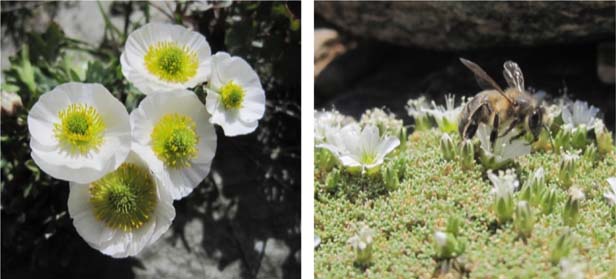
What is the impact of your project on ecology and society?
GL : The project is developed in a multidisciplinary research context, combining methods typical of Earth sciences (like geochronology, geomorphology and soil biogeochemestry) with computational innovations in ecology and recent developments in molecular biology (environmental DNA sequencing and metabarcoding). Finally, we will pay particular attention to environmental education and cultural aspects. I find it essential to place the results of scientific research within the broader social, political and economic context associated with the climate and ecological crisis. Please visit our dissemination page to stay tuned !
Why tackle the issue of biodiversity in the face of disappearing glaciers?
GL : Having grown up at the Alpine foothills and being a climber and mountaineer, I like and respect nature, and particularly mountains. My personal motivation is to support and protect biodiversity. This project simply combines two of my favorites: biodiversity and high mountain environments. I wish to actively contribute to the mitigation of the current climate and ecological crisis by doing my small part in this social “fight”.
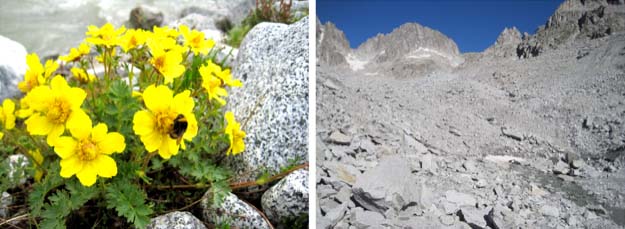
Why have you chosen IDYST to carry out your project?
GL : IDYST is a hotspot for alpine research! Indeed, it hosts different research groups with whom I can close collaborate. We have a great match and complementarity of research focus and expertise. Furthermore, I really like the broader scientific and educational goals of FGSE, which align with my own values, and I am really honored to contribute to its societal endeavor.
Dr Losapio’s biography in a nutshell
My career path started at University of Milan with a BSc and Msc in natural sciences with a specialization in botany. During that time, I conceived my own thesis project looking at the effects of glacier retreat on plant and pollinator communities! Then, I moved to Zurich for a PhD in Ecology (my supervisor Christian Schöb was himself an Ambizione grantee!), studying still ecological networks in high-altitude ecosystems. Then, my first postdoc was on environmental change and biocommunication at ETH, before going to Stanford for a second post in conservation biology.
Biodiversity Change, group page
